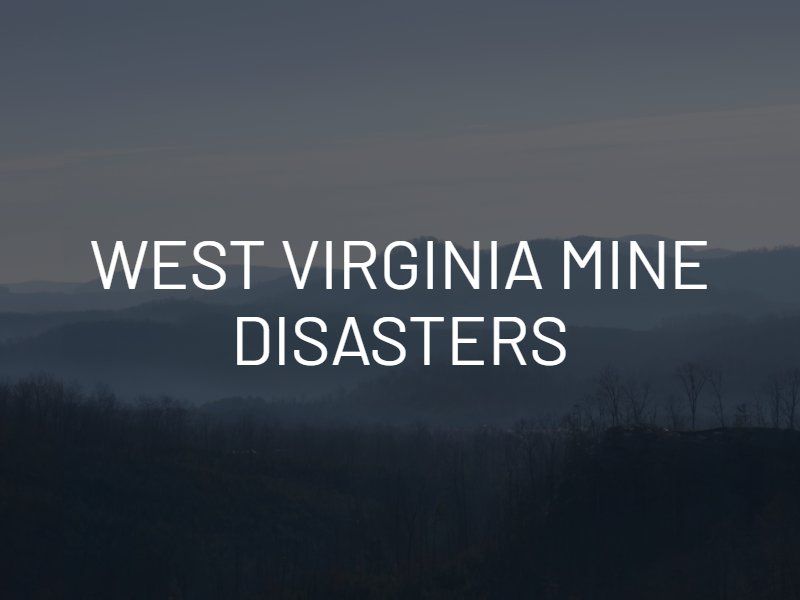West Virginia is known around the world for coal mining. While the industry serves as a source of work and income, it’s a high-risk job. Throughout history, coal booms have been underlined by the deaths of hardworking miners stuck in the wrong place at the wrong time. Here are some of the worst mining disasters in our state’s history:
Fairmont Coal Company Mining Disaster, Monongah, WV (1907)
This disaster is often referred to as the worst mining disaster in American history. In December of 1907, two explosions in nearby mines killed 362 men and boys. People could feel the impacts from the explosions as far as eight miles away. Horses and people were violently thrown by the force of the event, and many buildings were destroyed. To this day, officials aren’t sure of the cause. Many believe an equipment spark may have ignited dust or gasses in the air.
Eccles Mine Explosions (1914)
When a miner decided to eliminate a wall of coal in a mine to create a shortcut, the controlled explosion cut off ventilation to the mining areas. An open flame headlamp or lantern then ignited the buildup of methane gas in the area, triggering a tremendous explosion in mine no. 5. 174 miners lost their lives that day. People above ground couldn’t reach the bodies of the miners trapped in the rubble for four days. This tragedy is well-known as the second worst in the state’s history.
Benwood Mine Disaster (1924)
Ten years after the Eccles mine incident, the Benwood Mine Disaster claimed the lives of 119 miners. Two strong explosions occurred at 7:30 in the morning just after the miners started heading into the mines for the workday. Investigators expect methane gas also played a role in this 3rd most deadly event. Many miners died in the initial explosion, but some were killed breathing in the toxic air left behind.
Bartley Mine Explosion (1940)
91 men died in the No.1 mine at Bartley in January of 1940. Two witnesses standing outside the mine saw a black cloud of dust fly out the entrance. A rescue team that entered the mine soon after the initial explosion was driven back to the surface several hours later after a second explosion.
Farmington Mine Disaster (1968)
After the explosion at the Farmington No.9 mine, rescuers held out hope of finding survivors. 21 miners were ultimately saved, but the remaining 78 trapped below the surface never made it out. The fire resulting from the explosion made rescue efforts difficult, and subsequent explosions ruled out any hope of rescue for those trapped within. This disaster gave rise to today’s Federal Mine Safety and Health Administration.
Sago Mine Disaster (2006)
In recent history, the Sago Mine Disaster of 2006 claimed the lives of 12 miners. Only one managed to escape the destruction. Many surviving family members held out hope for hours that their loved ones survived only to be told otherwise at the end of the two-day recovery process.
Upper Big Branch Mine Disaster (2010)
In 2010, 29 miners working for Massey Energy lost their lives after an explosion occurred almost 1,000 feet underground. Two miners who survived were hospitalized. High methane levels were responsible for this incident. After subsequent investigations, the president made a statement indicating the explosion could have been prevented with better safety measures.
Deadly mining incidents have decreased over the years due to improved safety measures. However, high levels of methane gas still present a distinct risk for anyone who makes his or her living underground. When companies fail to take adequate safety measures to mitigate potential risks, they’re liable for the resulting damages. A West Virginia mining explosion lawyer at Tiano O’Dell, PLLC is here to help. If you have any questions, call our office at (304) 720-6700 or contact us online today for a free initial case evaluation.








